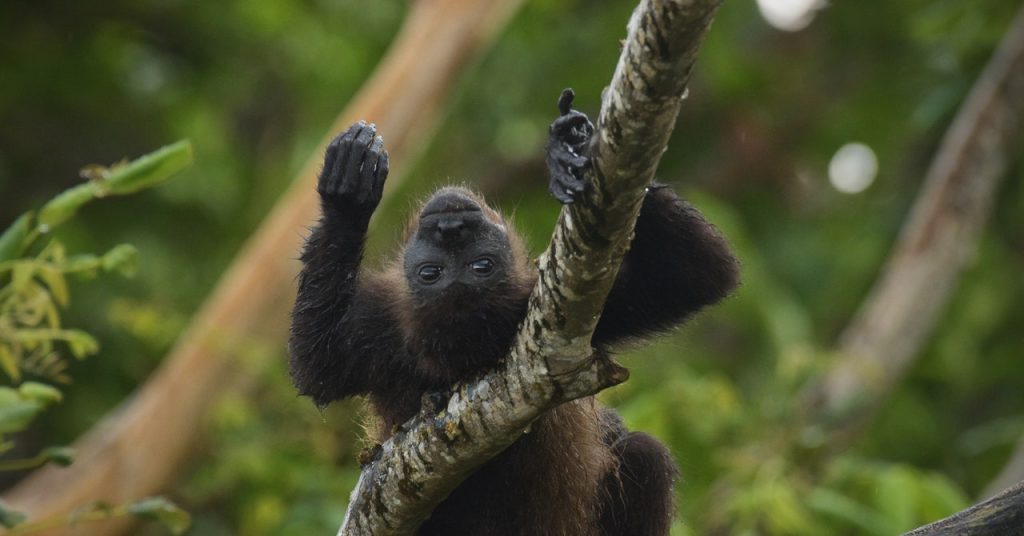Tragic Impact on Brown Howler Monkeys in Tabasco
Witnessing the Catastrophe
This story originally appeared on “, although they haven’t ruled out other factors. Deaths have been reported across the state of Tabasco.
“The feeling of the work team is tragic, it is painful,” says Gilberto Pozo, a wildlife biologist at the Institute of Ecology in Xalapa. “It hurts because all the efforts we have been making for years are going down the drain,” Pozo says, referring to recent efforts to protect the species.
Understanding the Species
Short-furred and endemic to the southern states of Mexico, brown howler monkeys (Alouatta palliata mexicana) are listed as “vulnerable” by the IUCN Red List. These monkeys primarily consume leaves, which provide them with water. Dehydrated leaves mean less water intake, making them susceptible to high temperatures.
Signs of Dehydration
Pozo has observed monkeys showing moderate to severe dehydration. Symptoms include apathy, poor coordination, high heart rates, and body temperatures over 40 degrees Celsius. Severe cases involve convulsions, irregular heartbeats, and fainting. “They become like little dolls,” Pozo says.
Heat Stroke Confirmation
Tania Fonseca from Mexico’s Institute of Ecology (Inecol) mentions that tissue analysis can confirm heat stroke. Monitoring live animals that have endured the heat is crucial as they may have damaged tissues and organs.
Environmental and Human Factors
Rising Temperatures
The average annual temperature in Tabasco is 27 degrees Celsius (80 F), with May being the hottest month. This season, temperatures have soared beyond 40 degrees (104 F).
Landscape Modifications
Bertha Valenzuela, a native of Comalcalco, Tabasco, explains that the Chontalpa region has only 3 percent of its original forest area left. The area is now largely adapted for farming, particularly cacao growing. The forest canopy is lower, and the understory is eliminated for crops.
Photo taken by scientist Bertha Valenzuela, who is from Chontalpa, of the monkeys’ habitat.
Photograph: Courtesy of Bertha Valenzuela
Decline in Cacao Production
Since the 2000s, cacao production has declined due to plant diseases and falling prices. Many farms have turned into pastures, fragmenting the monkeys’ habitat and compounding the effects of global heating.
A howler monkey in a cage at a veterinary hospital, where it recovers after being brought in by residents in Comalcalco, Tabasco.
Photograph: Yuri Cortez/Getty Images
Community Response and Challenges
Initial Response
Gilberto Pozo describes the first responses as “a sea of people helping out”—a mess, but without bad intentions. “There were more than 150 volunteers. If it wasn’t for the support of the population, it would be difficult,” he says.
Risks and Regulations
Some people took monkeys to clinics without registering them, so Profepa is now collecting data. Pozo is concerned about disease transmission between volunteers and primates. “They grabbed them, approached them without masks or gloves, hugged them, kissed them, talked to them. That represents a high risk of zoonosis or anthropozoonosis.”
Specialized Brigades
Ana María Santillán, founder of the Centro Mexicano de Rehabilitación de Primates, emphasizes the importance of not moving monkeys illegally. Civil organizations have formed specialized brigades, coordinated by Cobius, to manage the situation. These brigades recover dead or dying animals, care for the monkeys, and perform necropsies.
Expert Recommendations
Experts urge people to inform authorities of new cases and take affected monkeys to brigade units for proper care. They stress that the species is delicate and should not be given antibiotics or dewormers, nor should they mix with dogs or cats.
Future Conservation Efforts
Releasing Monkeys
It’s uncertain when it will be safe to release the affected monkeys. Environmental conditions need to improve to prevent recurrence. Special care is needed when releasing juveniles.
Conservation Strategies
Juan Carlos Serio, a researcher at Inecol, highlights the need for better conservation efforts. Howler monkeys are crucial for seed dispersal and forest regeneration. “Losing them means losing an important cultural element,” he says.
A brown howler monkey on a branch in Centla, Tabasco.
Photograph: Arturo Ochoa/Getty Images
Community Engagement
Jorge Ramos Luna from Inecol creates videos to engage local communities in conservation efforts. One strategy is to create natural corridors connecting forest patches. In Veracruz, “live fences” of trees and vegetation are used instead of lumber fences. “Monkeys are a charismatic species, an umbrella species: If we give them the conditions to survive, we will be providing conditions for many other species,” he says.
Local Recommendations
Valenzuela suggests stopping logging, restoring land, and involving local communities in monitoring and caring for the monkeys. The region’s inhabitants have shown care for the monkeys before, and the public response this time brings hope for improvement.

5 Comments
Is it too soon to ask if they’re now Mexican jumping monkeys?
Are the trees conspiring against the monkeys?
So, are monkeys going through a heatwave bootcamp now?
Victoria: Just when you think it can’t get any hotter… even the monkeys are bailing out now!
ElevenThermals: That’s one way to catch some shade, fall first!